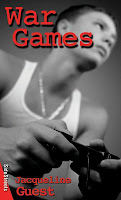Children's lit in the 20th Century
The
ground work laid in the 19th century paved the way for new and innovative
genres of kids lit in the 20th century, which didn't rely on traditional
folklore. With the dawning of the new century, fantasy stories with novel
settings and characters appeared on both sides of the Atlantic, as was
perfectly timed by L. Frank Baum's The Wonderful Wizard of Oz in 1900.
A.A. Milne wrote his first Winnie-the-Pooh (delightfully illustrated by
Ernest Shepard) in 1927, and the first Mary Poppins (P. L. Travers) came
out in 1934. J. R. R. Tolkien's works established what's become known as epic
fantasy with The Lord of the Rings beginning in 1937.
All
these books were so successful that many subsequent editions were printed, with
different illustrators and issued in different formats (collections, paperback
editions, colour editions, audio books, etc.). These stories, all still in
print in 2016, also all spawned TV and film versions later in the century.
The
demand for these story books prompted authors to follow up on their original
tales with additional titles, creating sets of books that shared characters,
settings, and similar story arcs. P. L. Travers released another seven books
with Mary Poppins as the lead character, while L. Frank Baum added thirteen
more titles to his Oz oeuvre. Mid-way through the 20th century, children’s books series
became increasingly popular, as was seen with Nancy Drew, The Hardy
Boys, and Enid Blyton’s The Famous Five and The Secret Seven.
And, of course, late in the century, the wildly successful Harry Potter
(J. K. Rowling) series of books made their debut, straddling both 20th
and 21st centuries.
 |
| Reading Owl (Canadian Animals series), V. Lawton |
Adult
themes also found their way into modern children's literature. The Little
Prince is a fantasy allegory (published in French as Le Petit Prince),
and is one of the best selling books of all time. Written in 1943 by Antoine de
Saint-Expery, The Little Prince was published essentially as a
children's book, with watercolour illustrations by the author, yet dealt with
profound philosophical questions regarding the nature of humanity.
In the
second half of the 20th century, children's libraries increasingly included
fantasy books with philosophical thinking points for their young readers, like
the sci-fantasy A Wrinkle in Time (Madeleine L’Engle), the allegorical Narnia
series (C. S. Lewis), and Charlotte's Web (E. B. White).
Awarding
Excellence in Children's Literature
A new
and significant measure of value was placed on children’s literature in the
20th century with the establishment of various awards, like the John Newbery
Medal in 1922. The Newbery was named for the 18th century English
publisher of children's literature, and is still awarded annually for the most
distinguished work of literature for children. Winners include Daughtery’s Daniel
Boone (1940), Lois Lowry’s The Giver (1994), and Katherine
Applegate’s The One and Only Ivan (2013).
First
awarded in 1938, the Randolph Caldecott Medal, named for the English
illustrator, was created to
celebrate the Best Picture Book of the Year. Winners of this award have
included Robert McCloskey’s Make Way for Ducklings in 1942, Bemelmans’ Madeline's
Rescue (1954), Sendak’s Where the Wild Things Are (1964), and Jon
Klassen’s This is Not My Hat (2013).
Next blog post – what does the
21st century hold for kids' lit?


Comments